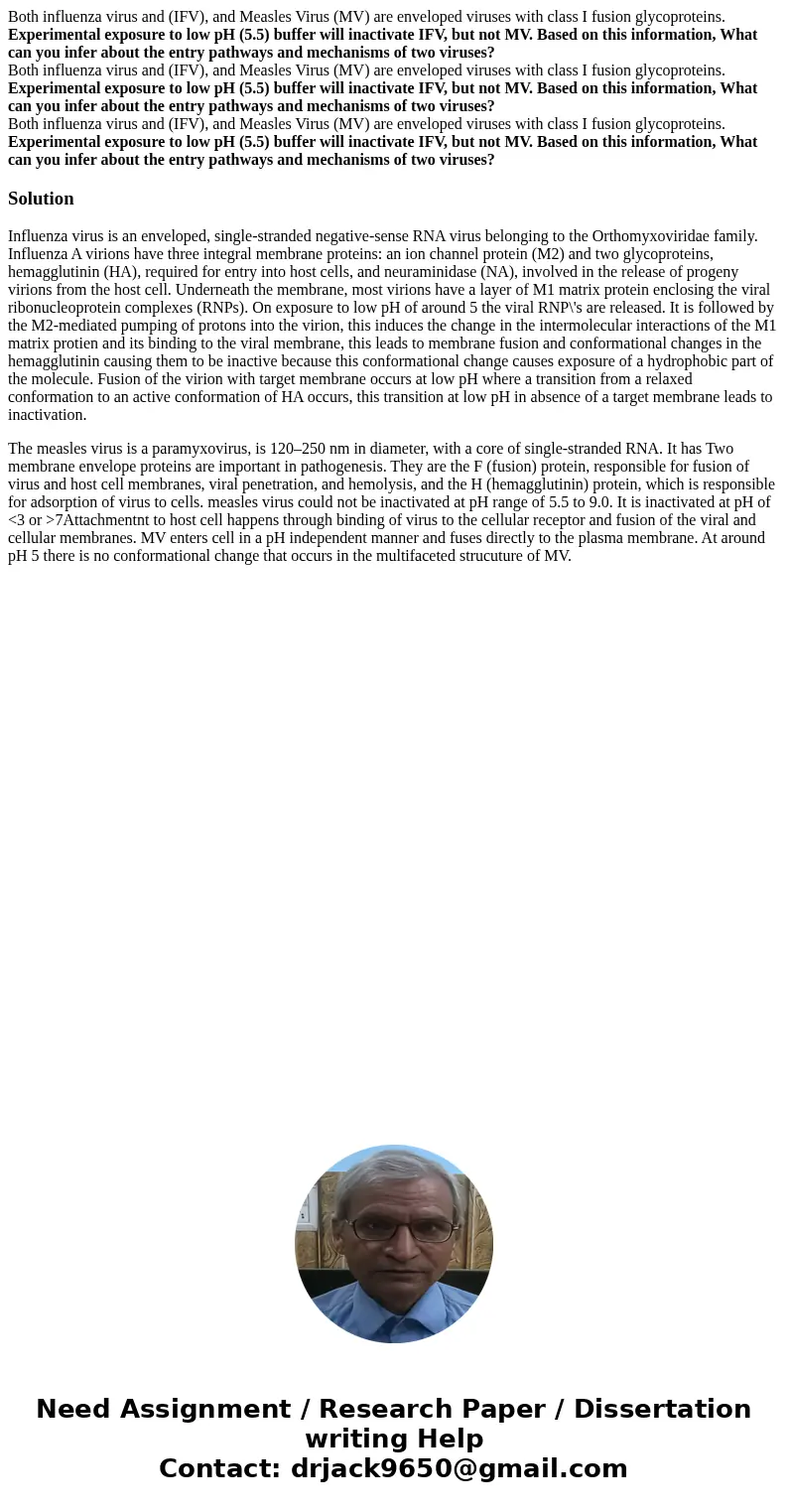Both influenza virus and IFV and Measles Virus MV are envelo
Solution
Influenza virus is an enveloped, single-stranded negative-sense RNA virus belonging to the Orthomyxoviridae family. Influenza A virions have three integral membrane proteins: an ion channel protein (M2) and two glycoproteins, hemagglutinin (HA), required for entry into host cells, and neuraminidase (NA), involved in the release of progeny virions from the host cell. Underneath the membrane, most virions have a layer of M1 matrix protein enclosing the viral ribonucleoprotein complexes (RNPs). On exposure to low pH of around 5 the viral RNP\'s are released. It is followed by the M2-mediated pumping of protons into the virion, this induces the change in the intermolecular interactions of the M1 matrix protien and its binding to the viral membrane, this leads to membrane fusion and conformational changes in the hemagglutinin causing them to be inactive because this conformational change causes exposure of a hydrophobic part of the molecule. Fusion of the virion with target membrane occurs at low pH where a transition from a relaxed conformation to an active conformation of HA occurs, this transition at low pH in absence of a target membrane leads to inactivation.
The measles virus is a paramyxovirus, is 120–250 nm in diameter, with a core of single-stranded RNA. It has Two membrane envelope proteins are important in pathogenesis. They are the F (fusion) protein, responsible for fusion of virus and host cell membranes, viral penetration, and hemolysis, and the H (hemagglutinin) protein, which is responsible for adsorption of virus to cells. measles virus could not be inactivated at pH range of 5.5 to 9.0. It is inactivated at pH of <3 or >7Attachmentnt to host cell happens through binding of virus to the cellular receptor and fusion of the viral and cellular membranes. MV enters cell in a pH independent manner and fuses directly to the plasma membrane. At around pH 5 there is no conformational change that occurs in the multifaceted strucuture of MV.

 Homework Sourse
Homework Sourse